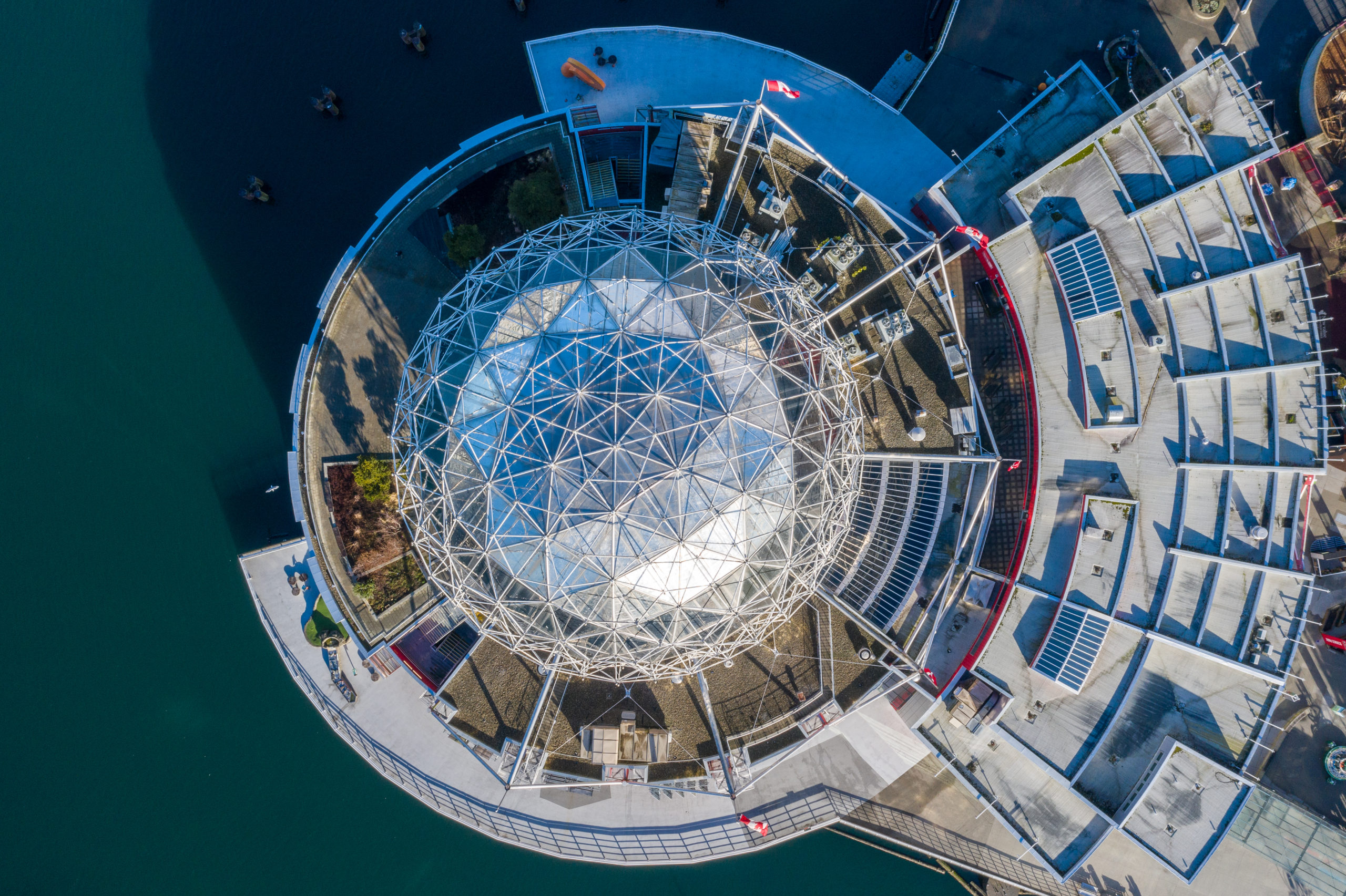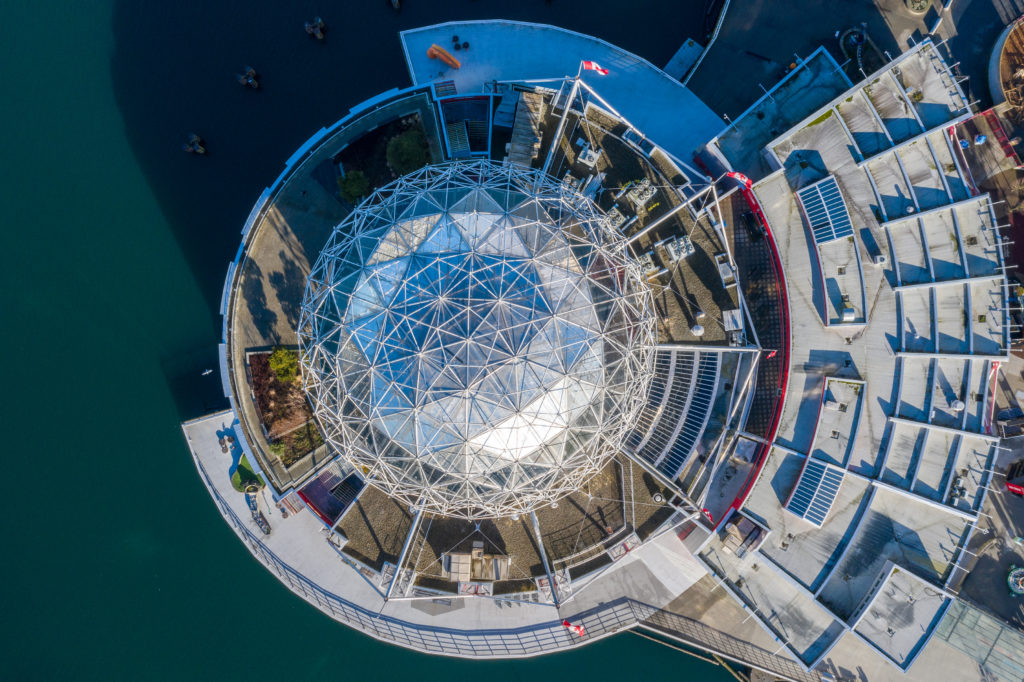This article about retrofits for building sustainability is powered by Concert Properties, presenting sponsors for Science World’s feature exhibition Towers of Tomorrow. It empowers us to explore the intersection of urban planning and community collaboration.
Ten years ago, Dave Ramslie worked for the City of Vancouver as a Senior Sustainability Programs Manager.
During his tenure, Vancouver built the first energy plant in North America to draw heat from untreated waste water. It's called the Neighbourhood Energy Utility (NEU).
When local residents feared the sewage treatment centre would be an eyesore, the City hired artists, engineers and designers to solve that problem.
The teams at Francl Architecture and Pechet & Robb Studio fashioned the exhaust stacks into five sleek, concrete fingers. The structure is complete with LED-light-up fingernails that shift from colour to colour depending on the neighbourhood’s energy consumption. A visual reminder to customers to use less.



